Introduction
The world’s largest asset manager, BlackRock, is moving to integrate digital assets into its portfolio by filing with the United States Securities and Exchange Commission (SEC) to launch a tokenized investment fund called the “BlackRock USD Institutional Digital Liquidity Fund” (BUIDL). This move signals BlackRock’s increasing involvement in digital assets, following its introduction of a bitcoin spot exchange-traded fund (ETF) and its pursuit of approval to launch an iShares Ethereum Trust for listing on Nasdaq.
Features of BUIDL
The BUIDL token was launched on March 4th, with an initial supply of 100 tokens held by a single address. According to the fund’s prospectus, a minimum investment of $100,000 is required. It operates similarly to a short-term money market fund focused on investments in securities such as commercial paper, certificates of deposit, and variable-rate notes.
The recent history of delays and oversight by regulatory bodies makes it challenging to obtain SEC approval for digital asset initiatives, such as BlackRock’s request for an Ethereum spot ETF. These regulations affecting many cryptocurrency companies highlight the challenges of integrating traditional finance with the evolving digital asset landscape.
Securitize will serve as the transfer agent and tokenization platform to manage tokenized shares, subscriptions, redemptions, and fund distributions. Securitize Markets will act as the placement agent, and PricewaterhouseCoopers LLP will be the auditor.

The Tokenization of Real Assets
For years, talk of tokenizing real-world assets (RWAs) has been prevalent. However, ensuring that blockchain tokens correspond to actual RWA ownership has been a major challenge. This initiative by BlackRock, the world’s largest asset manager, addresses this concern. The involvement of BNY Mellon for custody and independent auditors further strengthens the assurance of ownership.
Tokenized shares of this fund can be traded with the same ease as ETH or other crypto tokens, but on a much faster and wider scale. Since these are essentially securities, they require specific approval from financial authorities and platforms that comply with all regulations. Currently, BUIDL tokens won’t be tradable on cryptocurrency exchanges.
Carlos Domingo, co-founder and CEO of Securitize, stated, “Tokenizing securities has the potential to completely revolutionize capital markets. This news signifies that traditional financial products are becoming more accessible through digitization. Securitize is proud to be BlackRock’s chosen transfer agent, tokenization platform, and preferred placement agent for this initiative, aiming to digitize and expand access to their investment products.”
Conclusion
BlackRock is the world’s largest asset manager, and with the launch of this fund, not only does BlackRock enter the Ethereum world, after entering the Bitcoin one, but also, thanks to Securitize, it effectively becomes part of the crypto world, clearly indicating their vision of the near future.
Join ThePlatform to have full access to all analysis and content: https://www.theplatform.finance/registration/
Disclaimer: https://www.theplatform.finance/website-disclaimer/




